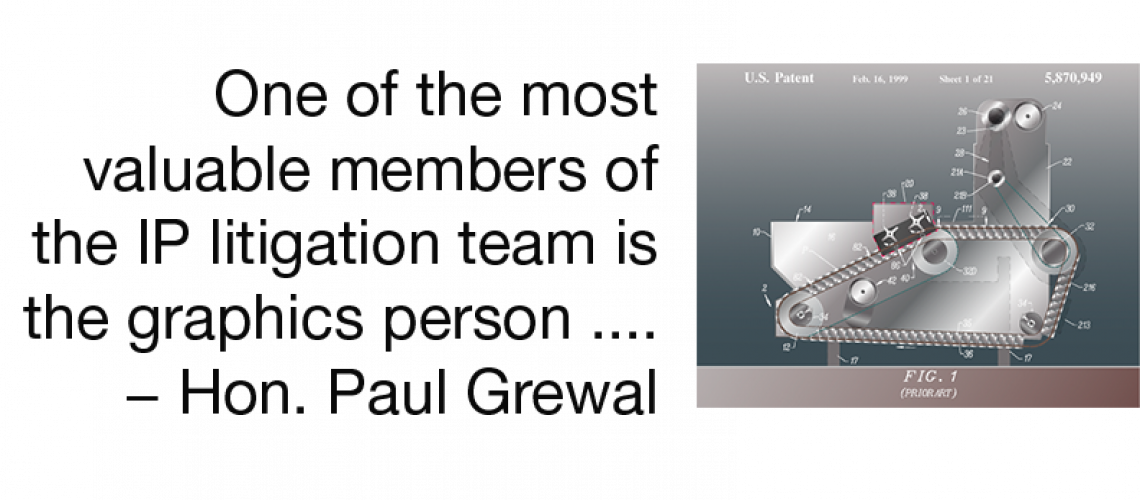Early development of graphics can help a judge understand the case from the beginning. That was the take-away from comments by the Honorable Paul Grewal of the Northern District of California, speaking on a judge’s panel at the annual meeting of the San Francisco Intellectual Property Law Association in Healdsburg last weekend. To paraphrase Judge Grewal:
One of the most valuable members of the IP litigation team is the graphics person, although it seems they are often brought in only at the last minute. A good graphic done right can be the most enduring way of conveying important themes in a case, especially if the same graphic can carry on from the beginning of the case to the very end. It is an important reminder for the court and its clerks over the life of a case.
Our experience is consistent with Judge Grewal’s. In working with patent and other complex cases, we find that visual explanations are critical to understanding and communicating technical issues.
For example, in a patent case, litigators must often explain the prior art and how it relates to the invention at issue in the case. This understanding of the prior state of the technology can be communicated with illustrations and animations of the technology, and with timelines that put the invention in context. Developing an early visual representation of these issues will help in presenting the case at the claim construction and tutorials. The visuals will also be useful in working with and deposing witnesses, and in summary judgment or other key hearings.
Contact us at 510-350-7616 or by email if you would like assistance with your next case presentation.
If you’d like to receive updates from this blog, please click to subscribe by email.


